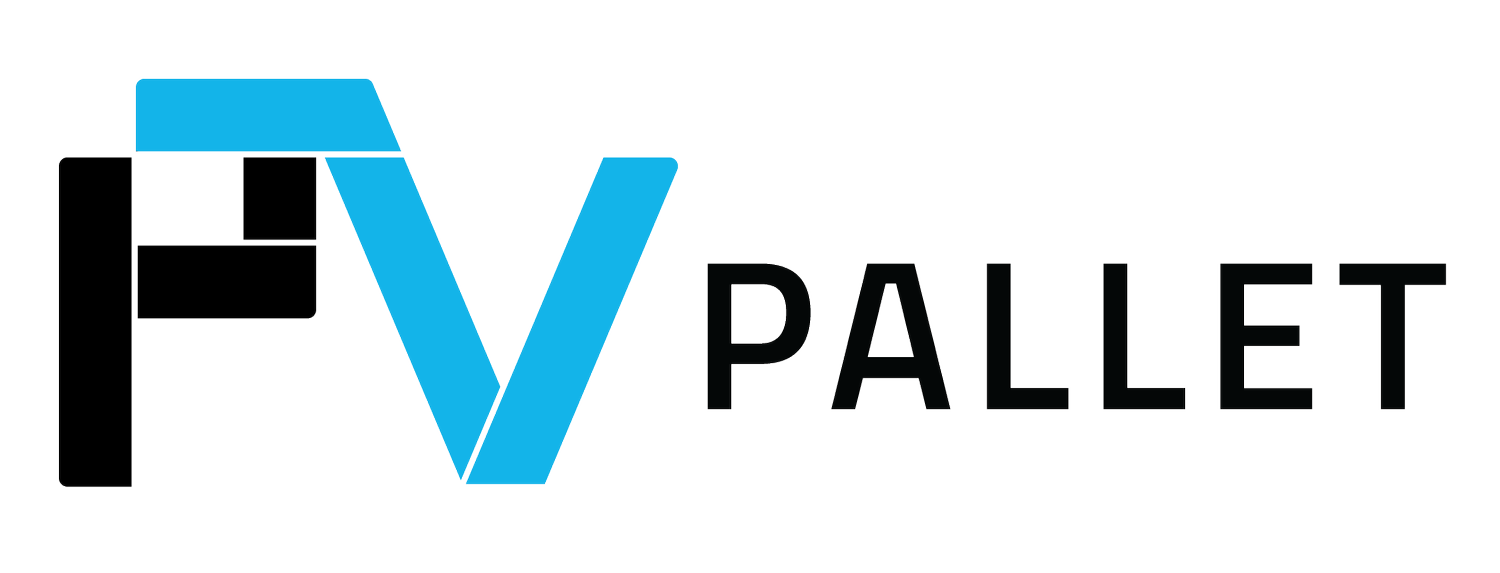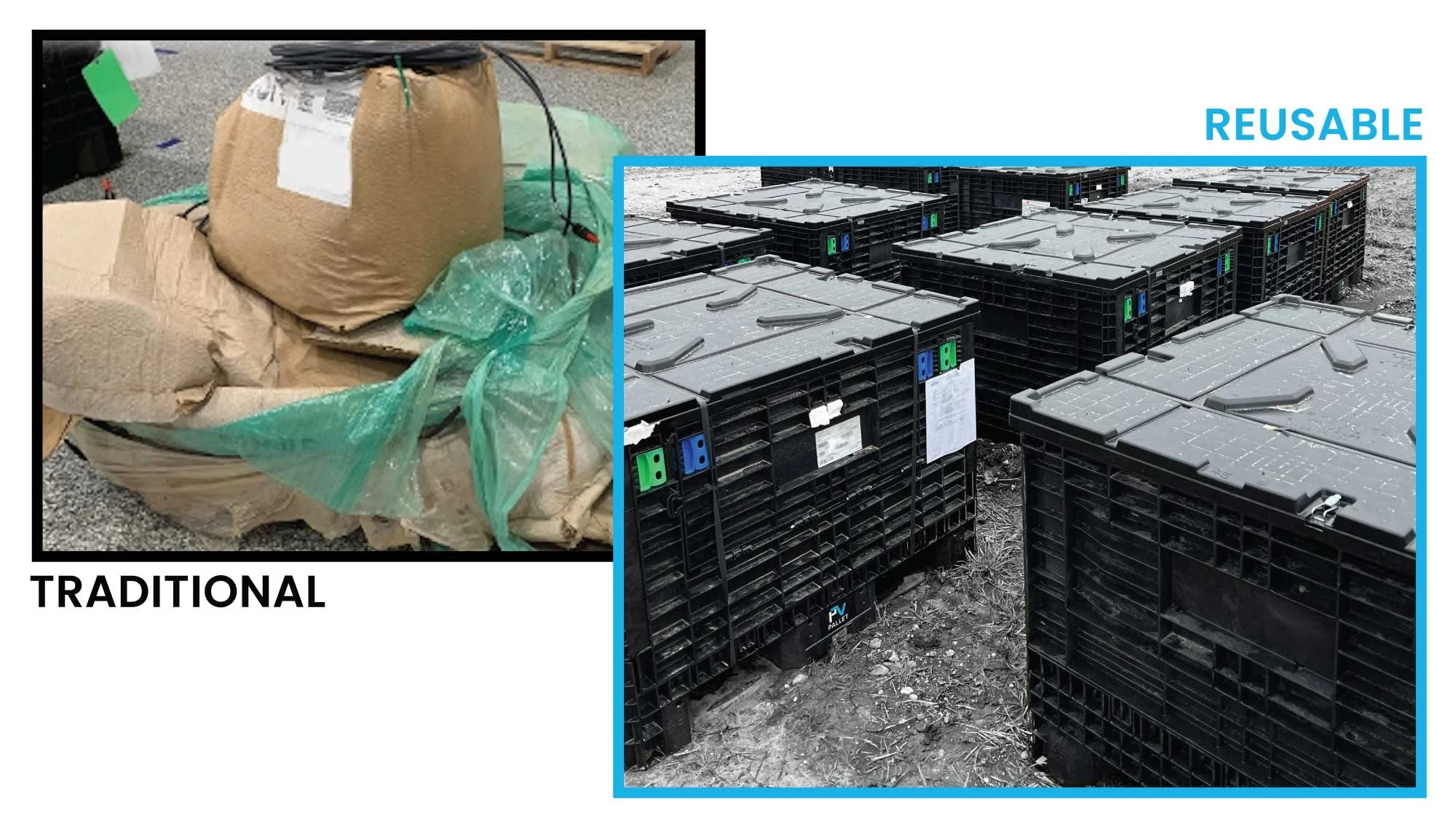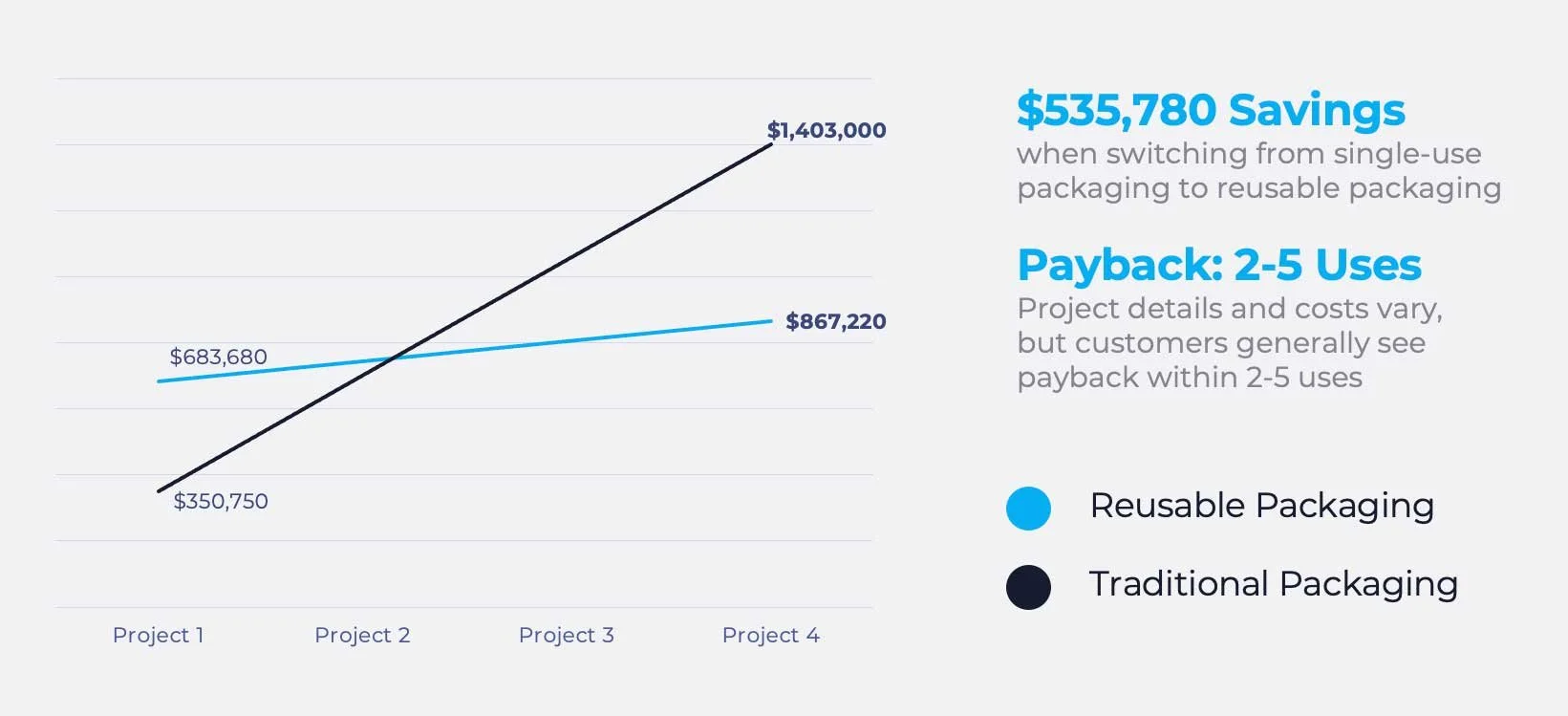5 Reasons Why Reusable Packaging is a Strategic Business Asset
For the solar and clean energy sectors, sustainability, innovation, and efficiency are paramount. Companies are continuously seeking new ways to optimize their operations, reduce costs, and reinforce their commitment to environmental stewardship. A company’s packaging choice is an impactful, yet often overlooked, way to achieve these objectives. Reusable packaging is emerging as a strategic asset that checks all the boxes: aligns with sustainability goals, streamlines operations, and saves money.
1. Product Protection
The primary purpose of any packaging solution is to protect its contents. This is particularly vital for solar companies whose fragile products like solar panels and electrical equipment often endure harsh outdoor conditions prior to installation. In 2023 alone, nearly 30 million solar modules were broken prior to installation. Much of that breakage happens because of poor packaging. Reusable packaging made from High-Density Polyethylene (HDPE) provides robust protection against external factors such as UV rays and inclement weather, ensuring product integrity from manufacturing to installation. The case of Stateline Solar underscores the value of protective packaging. After transitioning to reusable solar panel pallets, the company witnessed a 92% reduction in product breakage over six months. This translated into significant financial savings while also improving operational efficiency and sustainability.
Broken solar panels at solar installation site. An estimated 2-7% of solar panels are broken prior to installation. Breakage is often caused by poor packaging practices that make panels more susceptible to weather, forklifts, and impact during transit. Nearly 30 million solar panels were broken prior to installation in 2023—costing the industry ~$4.6 billion in damages.
2. Brand Identity
Choosing reusable packaging is a statement. It communicates a brand’s commitment to innovation and environmental responsibility. This strategic choice enhances a company’s identity, distinguishing it in a crowded marketplace as a leader in sustainable practices. For businesses in the renewable energy sector, such alignment between product offering and operational choices amplifies brand integrity. Reusable packaging also offers a better user experience. The convenience of handling and storing solar panels and balance of system components in durable, weather-resistant packaging adds value beyond the product itself. Footprint Project, for example, doubled their deployment capacity when utilizing a reusable pallet designed for solar panel handling and storage. This thoughtful approach to packaging elevates a brand in the eyes of its customers.
3. Sustainability Story
In 2023 alone, the global solar industry used nearly 33 million pallets, which equates to 2.6 billion pounds of wood waste. Most of this packaging ends up in landfills, resulting in an environmental impact that is nearly 10 times greater than a reusable packaging system. By adopting reusable packaging, businesses can dramatically reduce their carbon footprint. This commitment to sustainability weaves a compelling narrative of environmental responsibility and innovation while also helping clean energy companies meet their ESG initiatives.
4. Product Tracking
Since reusable packaging is returned and used for countless cycles, it allows technologies like barcode scanning and RFID to be easily integrated. This real-time tracking capability allows businesses to monitor their assets across the supply chain, enhancing operational efficiency and enabling better inventory management. The added ability to measure usage, circulation, and sustainability metrics ensures a transparent and accountable operation.
5. Cost Savings
While the initial capital expenditure (CAPEX) for reusable packaging may be higher compared to single-use alternatives, the long-term operational expenditure (OPEX) savings are substantial. Companies typically recover their initial investment within 2-5 uses. From reduced disposal and breakage costs to enhanced labor efficiency and safety improvements—not to mention eliminating the need to purchase single-use packaging—the savings accumulates with each use cycle.
Customer Payback after four 10 MW projects. Graph illustrates customer costs when using reusable versus single-use packaging for four 10 MW projects.
Reusable Packaging: A Business Asset
The switch to reusable packaging presents a compelling case for businesses, especially within the solar and renewable energy sectors, to rethink traditional packaging solutions. This strategic shift not only protects the product and enhances user experience but also solidifies a company's brand identity and commitment to sustainability. It's time for businesses to recognize that reusable packaging is a strategic business asset that offers long-term value and contributes to a more sustainable future.
Interested in implementing reusable packaging? Contact us today.




